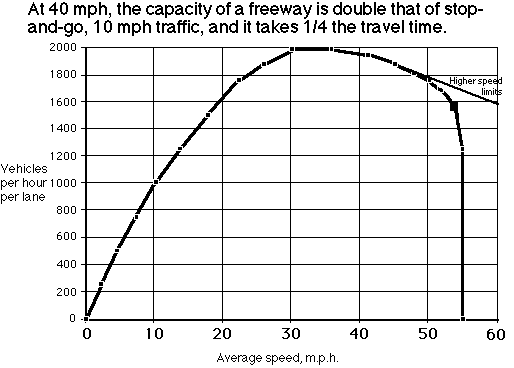This Plan details the legal and political steps to eliminate automobile subsidies, and to increase the efficiency of all transportation modes. It explains how to eliminate direct and indirect government subsidies, as well as government requirements for involuntary private subsidies. Included is a version of the plan written in legal form, as it would appear if it were a city ordinance. After enactment and evaluation, this would be a prototype for legislation to make similar changes at the state and county levels.
Automobile expenditures would be shifted from the general taxpayer to the automobile users. Fares for road usage and parking would be collected using non-stop, modern fare collection technology. FREEways would become FAREways. The use of free-market principles will benefit all transportation modes, including automobiles, and the economy in general. Sources for Road Financing (page 4) explains economic effects, and Modern Fare Collection (page 7) gives technical details. By using congestion pricing, the flow rate of automobiles would be greatly increased (see graph, below) and congestion eliminated.
The passage of this plan will eliminate requirements for the provision of parking, assessment districts for traffic mitigation, developer fees for roads, sales taxes for freeways and roads, and the myriad of subsidies (outlined in Huge City Subsidies for Autos, Trucks, page 11), which totals more than $4 per gallon of gas sold.
The elimination of laws forcing automobile accommodation and subsidies will allow land use to be transit/bicycle/pedestrian-oriented. No one would be forced to build transit-oriented development or to abolish parking spaces. This plan, if passed, would simply allow the possibility of transit, bicycle, and people oriented development, which today is prohibited almost everywhere. We believe that free market forces will naturally lean toward the types of development that occurred in the past, when public transit was privately owned and unsubsidized.
Pollution fees would be charged against air polluters, in amounts proportional to the pollution they produce.
Both pollution fees and road fares would pay for expenses and negative effects of the automobile. They should also substitute for general taxes (especially the sales tax) because, for decades, government subsidized the automobile and required land use that discourages transit, pedestrians, and bicycles (e.g., sprawl). The result of this government-required automobile-oriented development is that automobiles have an unfair competitive advantage. In order to attract private enterprise to again provide mass transit, this unfair advantage needs to be negated by government action to recover a profit from the automobile and truck transportation industry.
Everyone benefits by a Free Market for Transportation with the possible exception of oil, automobile, trucking, and highway/road construction interests (including highway engineers and Caltrans). But large groups of moneyed interests also benefit, making it easier for passage. (See Other ways people benefit from the Plan, page 9.)
One of the biggest selling points of the Plan is that it would even benefit those who insist on continued automobile commuting. This Plan would eliminate traffic congestion by using congestion pricing to achieve the optimal vehicle flow rate. At 40 mph, the capacity of a freeway is double that of stop-and-go, 10 mph traffic, and it takes 1/4 the travel time (see graph, below). This fact, while not widely known, is repeatedly found in highway engineering studies.
Even non-motorists would benefit by eliminating traffic congestion. Political pressure for more subsidies for more highway construction should end by people no longer stuck in traffic.

The above graph was generated empirically for a 55 mph speed limit. Higher speed limits will move the right segment of the curve to the right.
Sources: Highway Capacity Manual, Transportation Research Record #1005 (page 55), and other studies.